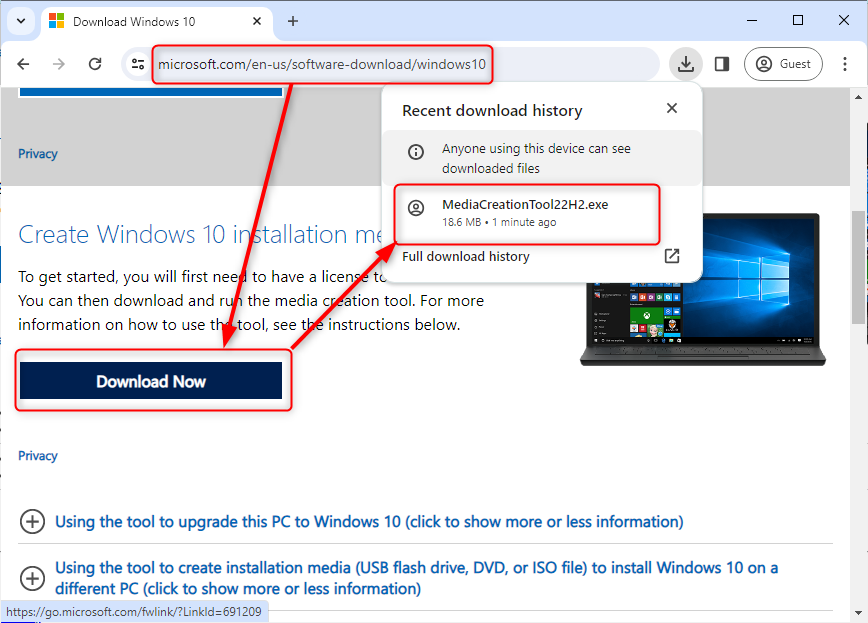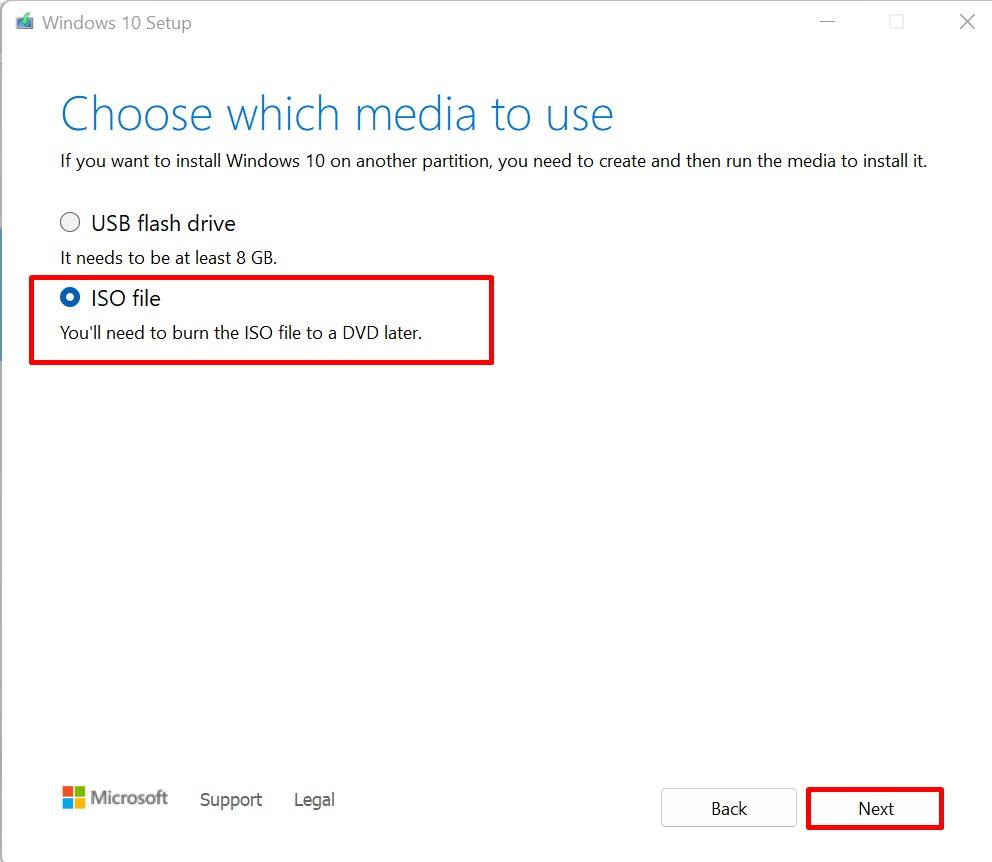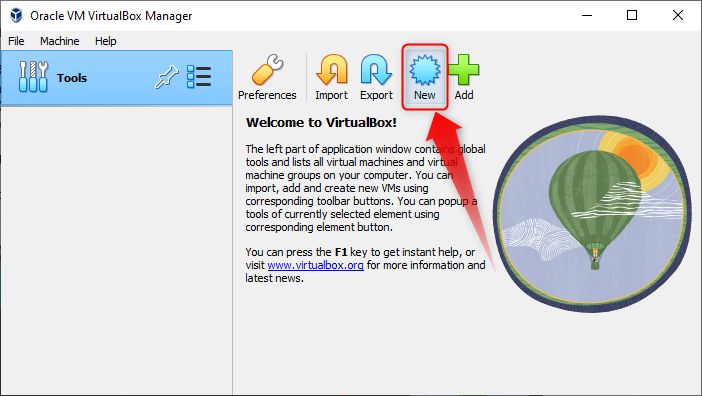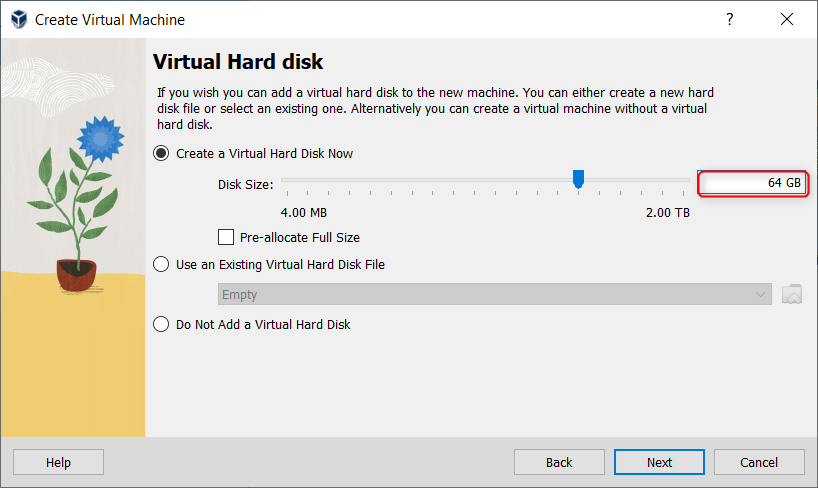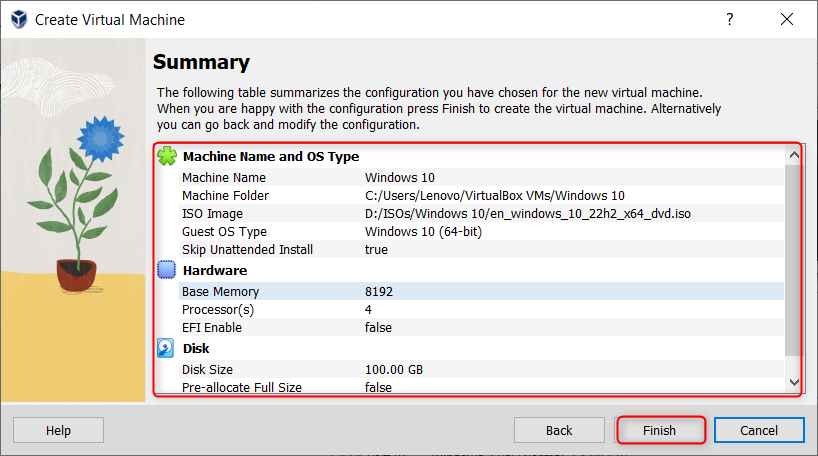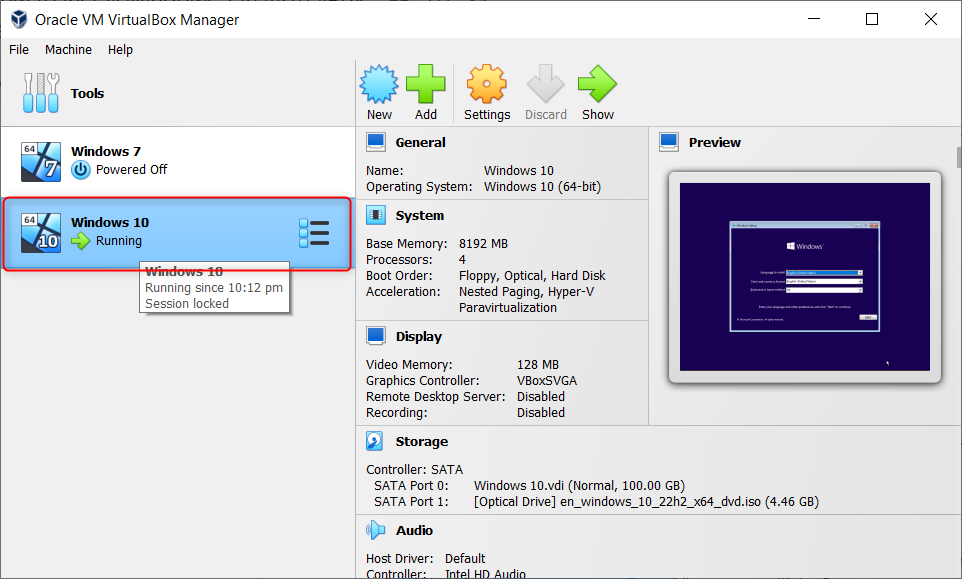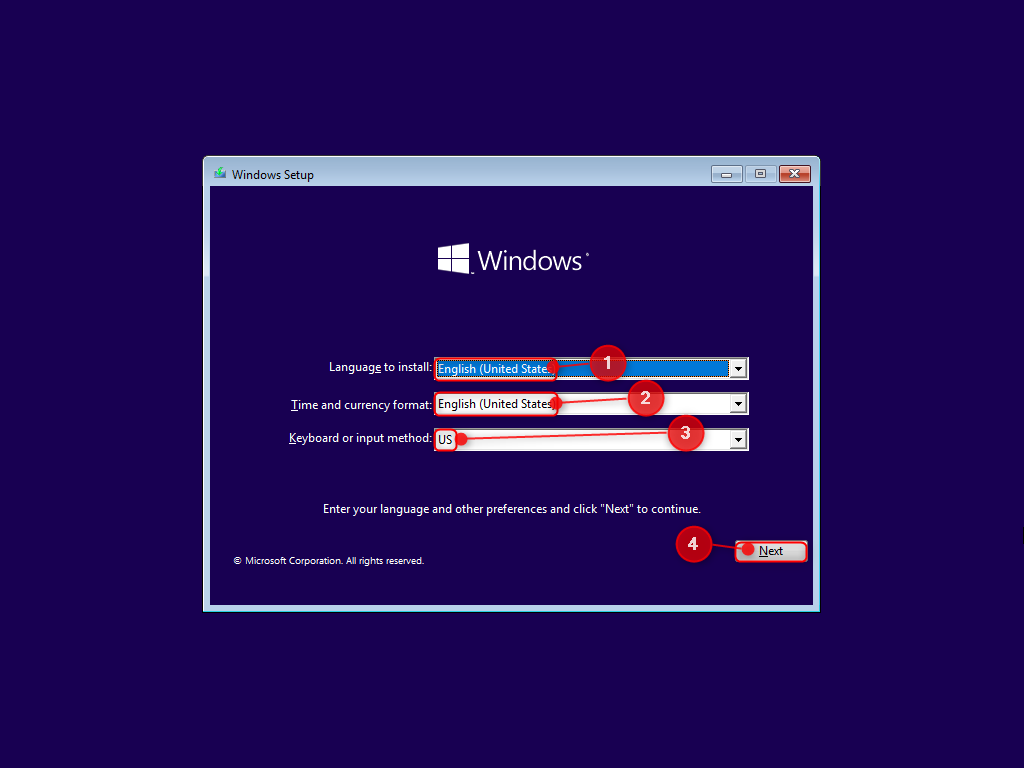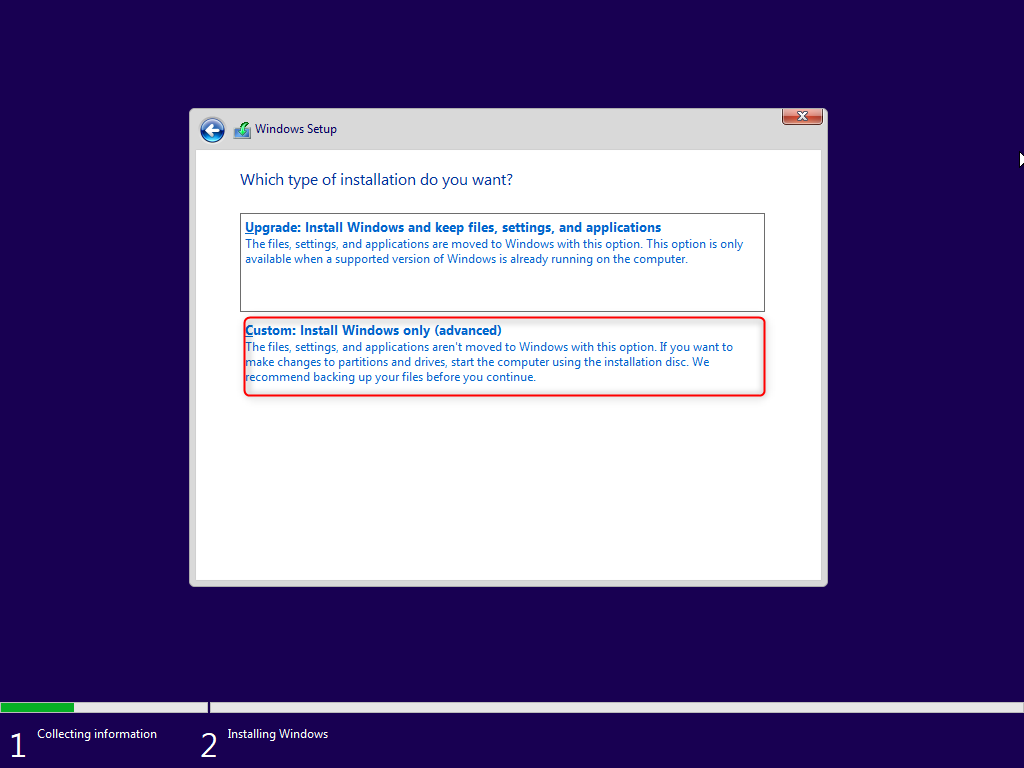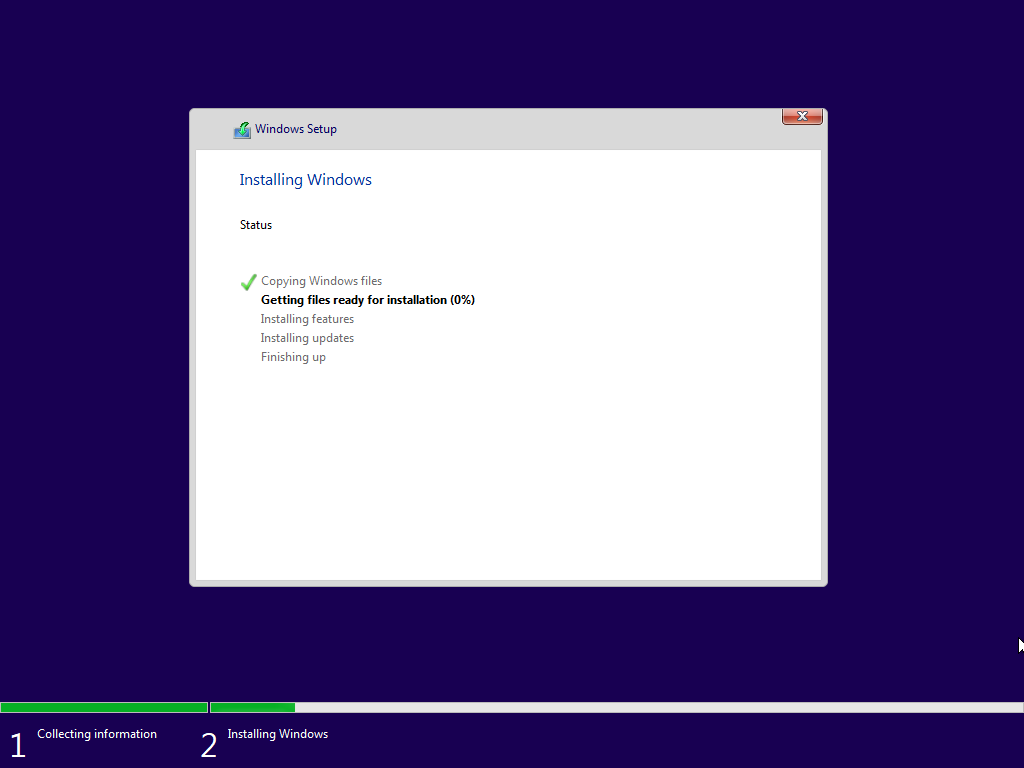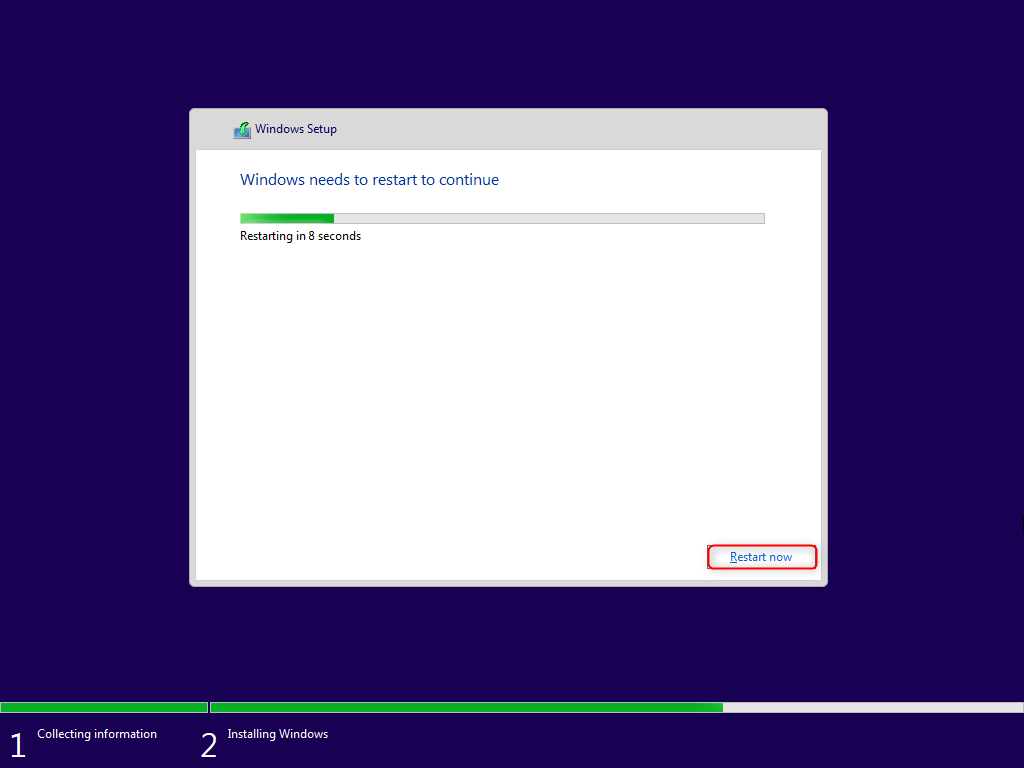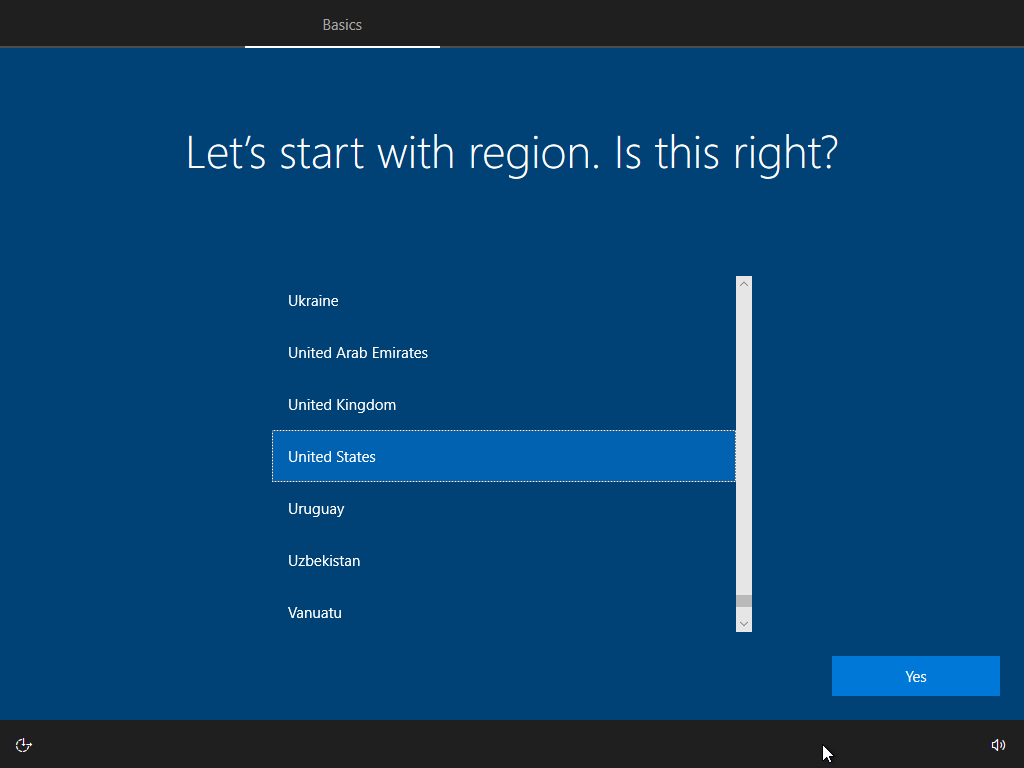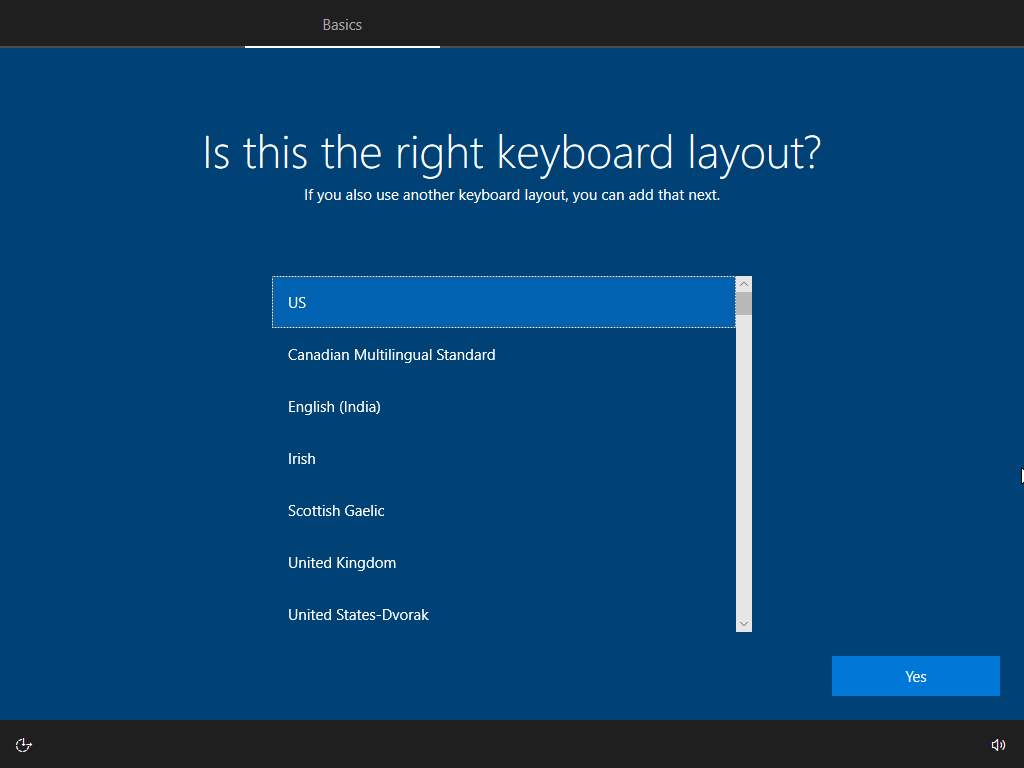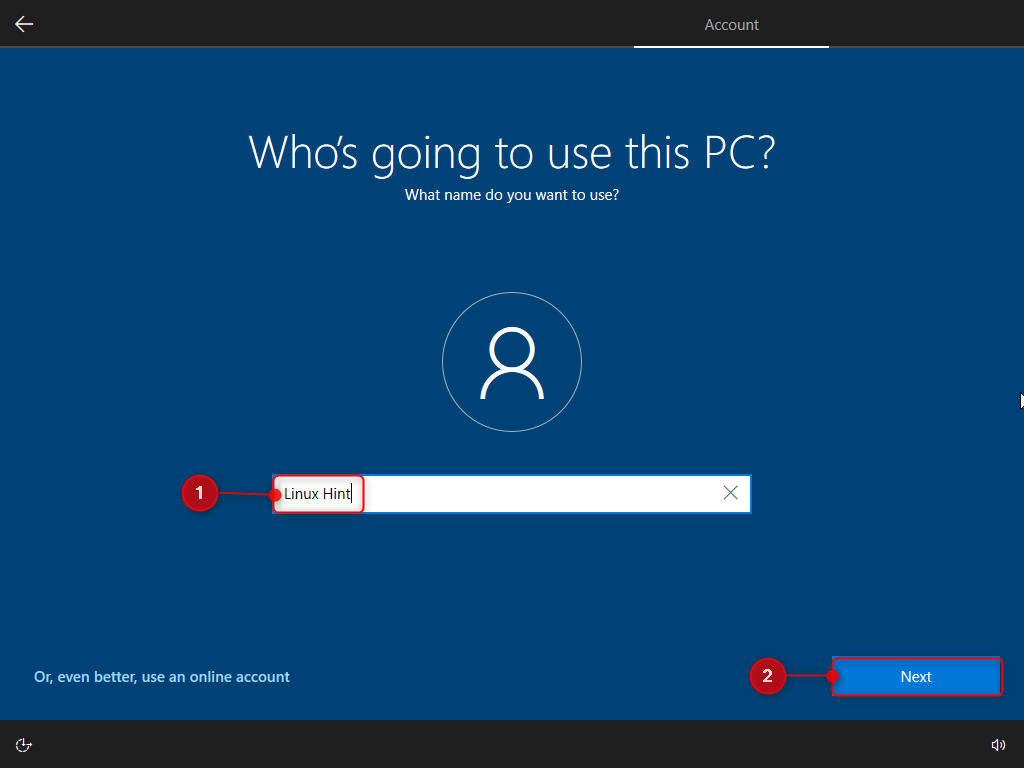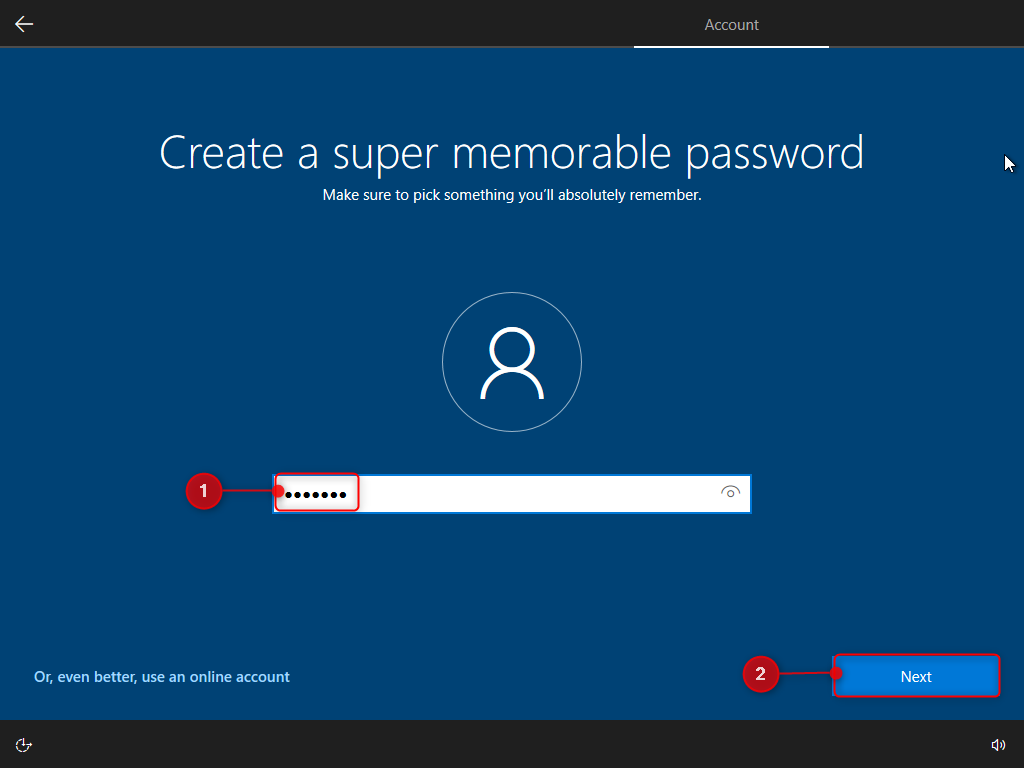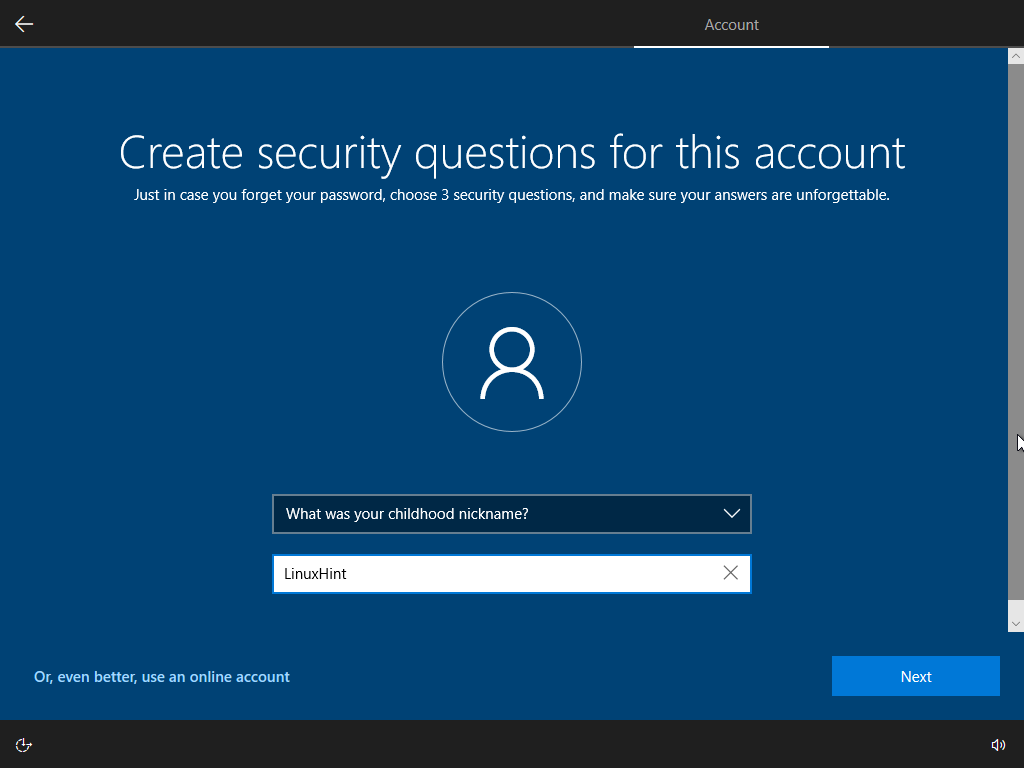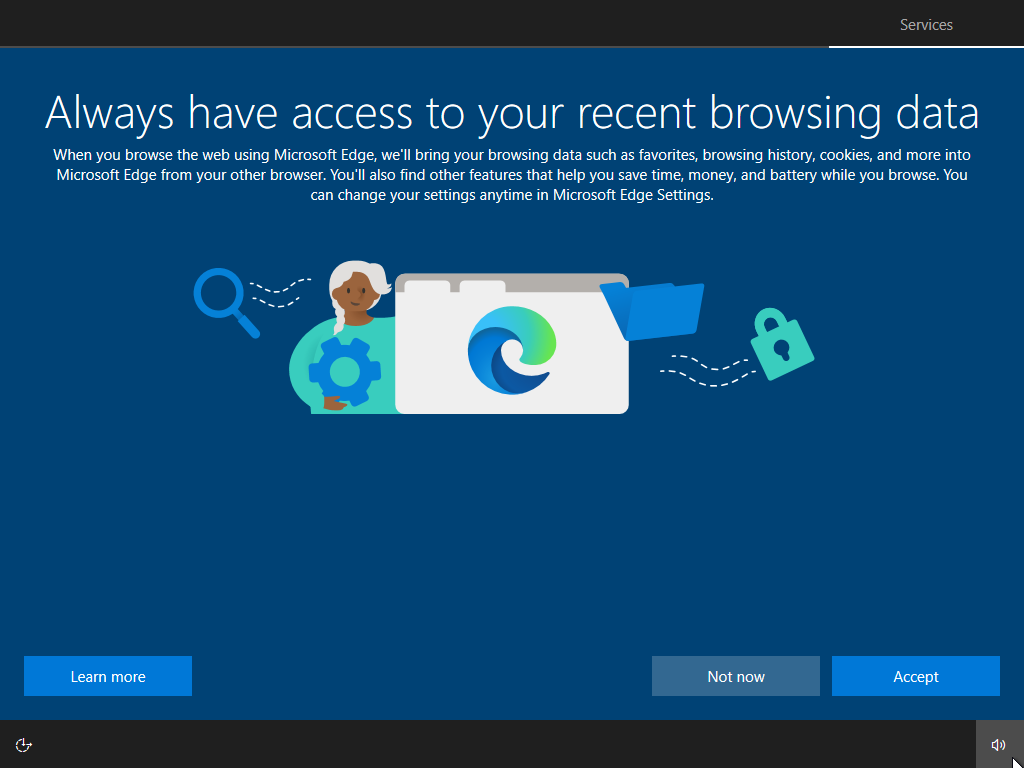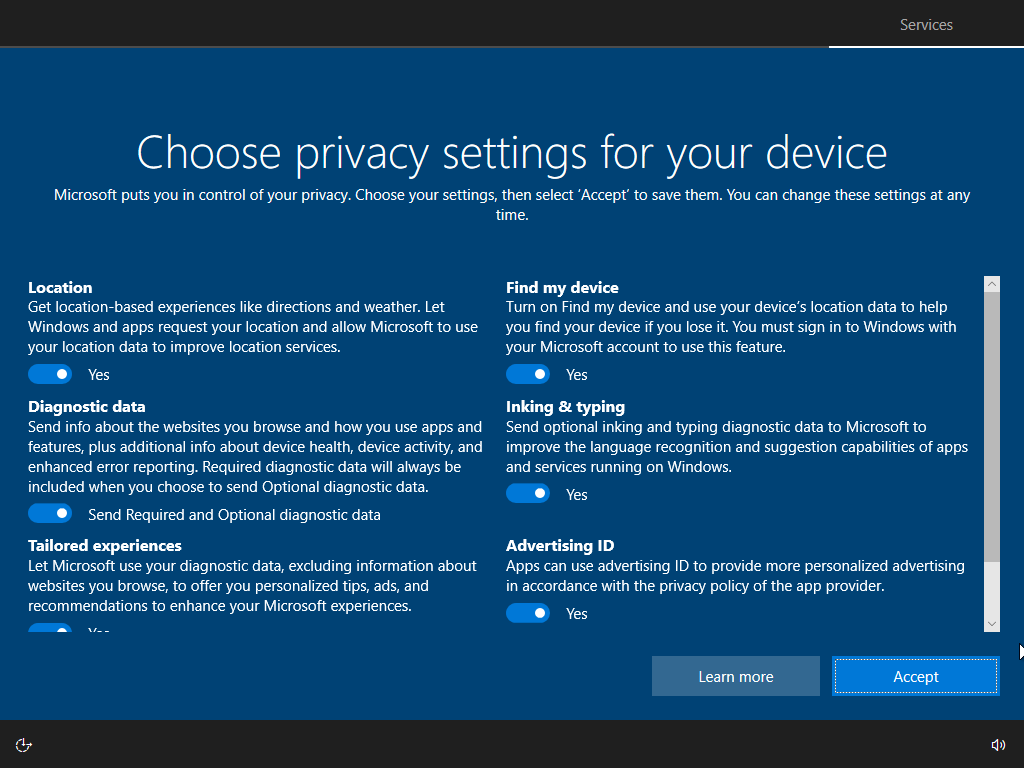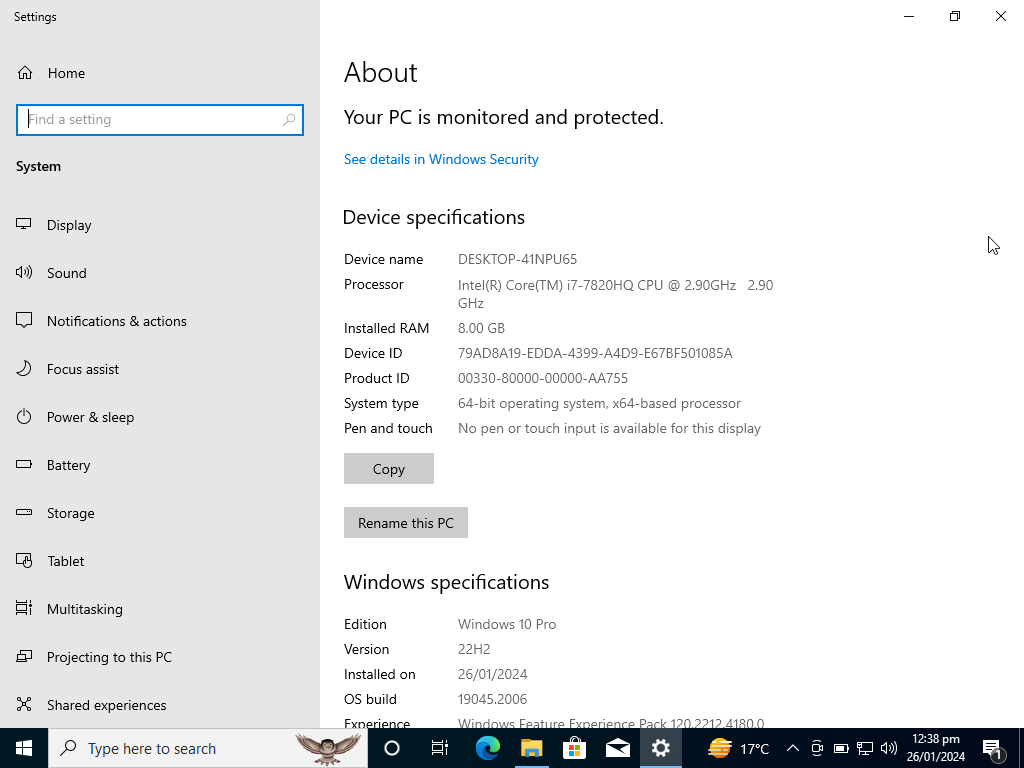This article will comprehensively explain the process of setting up a VM in VirtualBox and installing Windows 10 on that VM.
Download Windows 10 ISO File
To install the Windows 10 in VirtualBox, first download the Windows 10 ISO file. The downloading process for Windows 10 ISO is not straightforward. To download it, go through the below steps.
Step 1: Download Windows 10 Media Tool
Open Microsoft’s official website and click on the below pointed “Download Now” button to download the Windows 10 Media creation tool. Then, open the “MediaCreationTool.exe” file to start downloading Windows 10 ISO image:
Upon doing so, the Microsoft Software License Term Windows will appear. Press the “Accept” button to accept the terms:
Step 2: Download ISO File
Download the Windows 10 ISO file by marking the “Create Installation media” radio button and pressing the “Next”:
Now, choose the “ISO file” option and hit the “Next” to proceed:
Select the ISO file downloading location, set the name, and hit the “Save” button:
This will download the Windows 10 ISO file:
After downloading the file, press the “Finish” button:
Now, use the downloaded ISO files to install Windows 10 on VirtualBox.
How to Create a New VM on VirtualBox?
Create a virtual machine for Windows 10 by following the given procedure.
Step 1: Create a New VM
After opening the VirtualBox on your host operating system, click on the New button as highlighted below:
Step 2: Configure the Name for the VM
Type a suitable name for the VM and the VirtualBox will itself identify the OS you will be installing. In this case, we are installing Windows 10. After that, provide the Window ISO image by using the “ISO Image” drop down menu. Then, mark the below pointed checkbox to skip the unattended guest installation and press the “Next” button to proceed:
Step 3: Dedicate the RAM and Processors to the VM
Specify the amount of RAM to the VM depending upon the RAM of the host machine. For example, if your host machine has a RAM of 8 GB, you can dedicate 4 GB to the host OS. Also, specify the processors that the guest VM can use:
Step 4: Dedicate Space to the Virtual Hard Disk
Specify some space as Virtual Hard Drive of Virtual Machine. The space is allocated dynamically, which means that it won’t use it all once or you can specify a fixed size that is more stable depending on the host machine:
Step 5: Review the settings for the VM
Now, the short summary of the VirtualBox’s VM is displayed. Review the summary and press “Finish”:
Step 6: Additional Configurations
After the VM has been created, you have the agility to change the required settings for the VM:
After this, proceed to the installation of Windows 10 on the VM.
How to Install Windows 10 in VirtualBox?
The Virtual Machine has been set up successfully on the computer and as the ISO file for Windows 10 has already been configured earlier just start the VM and the installation procedure for Windows will start.
Step 1: Run the VM created in the above steps
Click on the created VM and press the “Start” button to start the Virtual Machine. This will start the virtual machine:
Step 2: Set the Basics for the Windows
Once the machine is operational, the ISO file we configured above will begin the installation of Windows 10. Choose the language format, currency and the essentials then click on Next:
Step 3: Begin the Installation
The installation can be initiated by clicking on the Install Now button in the new window that appears:
Step 4: Product Key Configuration
Next, the installation process would ask for a product key for Windows activation, if you have any product key then enter it and press the Next button. Otherwise, click on the button that says “I don’t have a product key”:
Step 5: Select the Windows 10 Version
Now a list of versions will appear from where you can select which version is to be installed. In this installation, the Windows 10 pro version would be installed:
Step 6: License and Term Agreements
Every software comes with some license and term agreements that require permission from users before installation. Mark the “I accept the license terms” checkbox and press the “Next”:
Step 7: Select the Installation Type
Next, select the “Custom: Install Window only” option to clean and smooth installation of Windows on the VM:
Step 8: Drive Selection for Installation
Now, select the virtual drive where you want to install it. After that, hit the “Next” to proceed:
Step 9: Wait for the Setup to Install Windows
The installation wizard will start installing the essential files needed to power up the VM with an OS. This process would take some time so wait for the setup wizard:
Step 10: Restart the VM
A timer will start after which the computer will restart. You can also select the Restart Now button:
Step 11: Select the Region
Now, select the desired region to fetch the correct time zone from the menu and press the “Yes” button:
Step 12: Select the Keyboard Layout
A new window will appear in which you need to select the keyboard layout:
Step 13: Set the Account For Windows
Here, you can select the Windows account for the VM. For personal use, select the “Set up for personal use” option. You can also set up Windows 10 for organization. After that, press the “Next”:
Step 14: Add an Account
You can add an account for the device or continue with an offline account:
A new window will appear. Click on the “Next” button to create a new user account:
Step 15: Specify the Account Name
You must specify the account name which will appear every time the VM starts:
Step 16: Specify the Password
Now, specify the password of Windows 10:
Step 17: Setup the Security Questions
Set the security questions for the device in case the password is forgotten:
Step 18: Grant Access to the Browsing Data
Now, permit the synchronization of browsing data by pressing the “Accept” button:
Step 19: Accept Privacy Settings
Set up the privacy settings according to your preferences and press the “Accept” button:
This will start loading the Windows 10 OS in VirtualBox.
Step 20: Check the OS Properties
You can check the properties of the OS by right-clicking on My PC and selecting the properties option. The following window will appear:
We have effectively installed the Windows 10 in VirtualBox.
Conclusion
To install Windows 10 in a VirtualBox, first create a virtual machine in the VirtualBox. While creating the VM, configure the ISO file for Windows 10 and dedicate a suitable amount of RAM and ROM to the VM. This memory is used to power up the OS. After creating the machine, run it and the installation for Windows 10 will start. So go through the on-screen steps and install the Windows 10 installation process. We have covered the method to set up Windows 10 in VirtualBox’s virtual machine.

